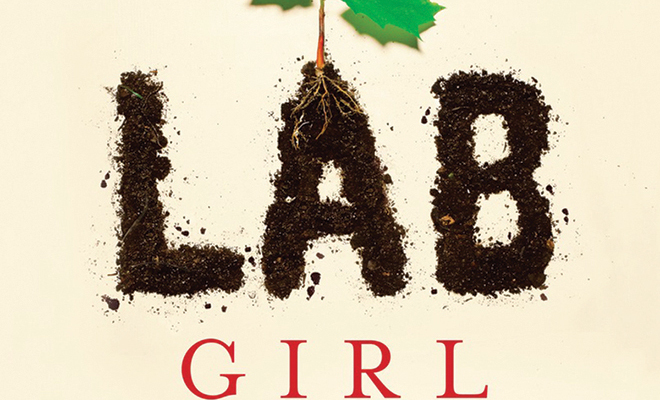
Lab Girl By Hope Jahren
Hope Jahren is an internationally renowned geobiologist with three Fulbrights, her own world-class laboratory at the University of Hawaii and a Wikipedia page longer than most U.S. senators’. This debut memoir from a woman in science will encourage readers to take a new look at the natural world.
Occasionally, a book comes along that draws you in from the first words. When it describes a seed, you have an unusual book. In Lab Girl, Hope Jahren weaves a memoir and a treatise on the plant kingdom into a book that will keep you entertained from the first pages. The book is divided into two sections told in alternating chapters. One section is Jahren’s autobiography and the other is devoted to her science.
Jahren begins by convincing us that we are scientists. Then she makes a sharp turn and talks about her time spent in her father’s lab. Her father was a community college teacher who taught physics and earth science in the lab for 42 years. Jahren was allowed to roam the lab, ducking under tables and benches until she was tall enough to play on them.
As she recounts her childhood memories, Jahren discusses the taciturnity of the Norwegian immigrants in Minnesota. She felt not only the coldness of Minnesota, but the coldness of the people who lived there also. Her relationship with her mother was distant. She remembered her mother as always being angry–slamming kitchen drawers, for example. Her mother wanted a garden that produced an ample supply of fruit and vegetables, but one that didn’t require much care. As
Jahren grew up, it became clearer to her that she should conform to stereotypical sex roles and be more like her mother and less like her scientist father.
The University of Minnesota changed that belief. Even though Jahren had studied literature with her mother when her mother re-enrolled in the university through correspondence courses, she soon discovered that her place was in science.
The university lab made her feel at home.
Jahren writes eloquently about being a female scientist and her labs. Her lab is “where the lights are always on,” “where there is no phone,” and “where the door is always locked.” Her lab is like a church where she can figure out what she believes. During her career, Jahren built and ran three labs where her research interests were trees, flowers, seeds and soil. She has won numerous awards and is currently a tenured professor at the University of Hawaii at Mānoa in Honolulu, Hawaii.
When Jahren discusses trees and seeds, she is at her most articulate. “A seed knows how to wait,” she says and recounts the story of a lotus seed found in a Chinese bog. The embryo grew and the seedling thrived. Only then did scientists discover that the empty husk was at least two thousand years old. For the rest of the book, Jahren engrossingly describes the life and stages of the tree.
Much of the book is describes stories of building labs and her lab partner, Bill. She met Bill her first year as a grad student assistant instructor. When they were on a soil class dig, Bill’s desire to be at the edge of the class and to carry his own digging tool to the excavation site intrigued her. After the six-week dig, she convinced her mentor to hire Bill to work in the lab. Thus began a life-long association with Bill, her future lab partner. Over her career, Bill managed the nitty gritty of keeping the lab running, seeing that the experiments were carried out, tutoring students, fixing broken equipment, driving on field trips and helping students with their theses.
A theme that Jahren develops at length is the state of research grants in the U.S. When we hear that millions of our tax dollars are spent on research, most of us assume that this covers all research with plenty to go around. Jahren disabuses us of this notion by explaining in great detail how research grants are obtained and what they are spent on in addition to comparing the National Science Foundation’s budget to other agencies’ budgets. The entire NSF budget for 2013 was $7.3 billion. Sounds like a lot, but the budget for the Department of Agriculture was about three times that. NASA’s 2013 budget was $17 billion. The Department of Homeland Security’s budget was approximately five times the size of NASA’s budget. Her ultimate point is to explain that her “curiosity-driven research” receives about $165,000 per contract. After paying Bill’s salary ($25,000) and benefits ($10,000), she continues to whittle away at the different expenses and overhead in her budget. Jahren says that realistically she nets about $10,000 of spendable cash from the contract for all chemicals and equipment necessary for three years of state-of-the-art high-tech lab work.
Hope Jahren is an extraordinary scientist, but what impressed me the most was her ability to translate her science into language that I could understand and thoroughly enjoy. This book won’t be for everyone, but for those of us who do enjoy plants in our daily lives, and memoirs, this book is an exceptionally good read. ■







